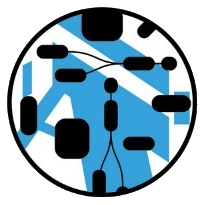Nasdanika graph model provides base classes (building blocks) for graph-like models such as process/flow and architecture models.
The model can also be used AS-IS. Living Beings (source) demonstrated mapping of a Drawio diagram to this model and generation of HTML documentation. The mapping process is explained in the Beyond Diagrams book.
The below diagram shows some of the model classes:
Graph is a container of graph elements:
- Connection source - source and container of connections
- Connection target
- Sub-graph - both graph element and graph, allows to nest graphs
Node is both connection source and connection target. I.e. it may have both outgoing and incoming connections.
Then there are Composite flavors of connection source, connection target and node - they are also sub-graphs, i.e. may contain other graph elements. There is an aggregate connection - Tunnel.
Not shown on the diagram are Documented Named flavors of the above classes, including Documented Named Composite flavors.
Adapting to graph
Graph model elements can be adapted to Graph interfaces with org.nasdanika.graph.model.adapters.GraphAdapterFactory as shown below:
GraphAdapterFactory graphAdapterFactory = new GraphAdapterFactory();
Transformer<EObject,ElementAdapter<?>> graphFactory = new Transformer<>(graphAdapterFactory); // Reflective creation
ProgressMonitor progressMonitor = new PrintStreamProgressMonitor();
Map<EObject, ElementAdapter<?>> registry = graphFactory.transform(Collections.singleton(graph), false, progressMonitor);
Once you have a graph you may create processors on top of it.
 Nasdanika Models
Nasdanika Models